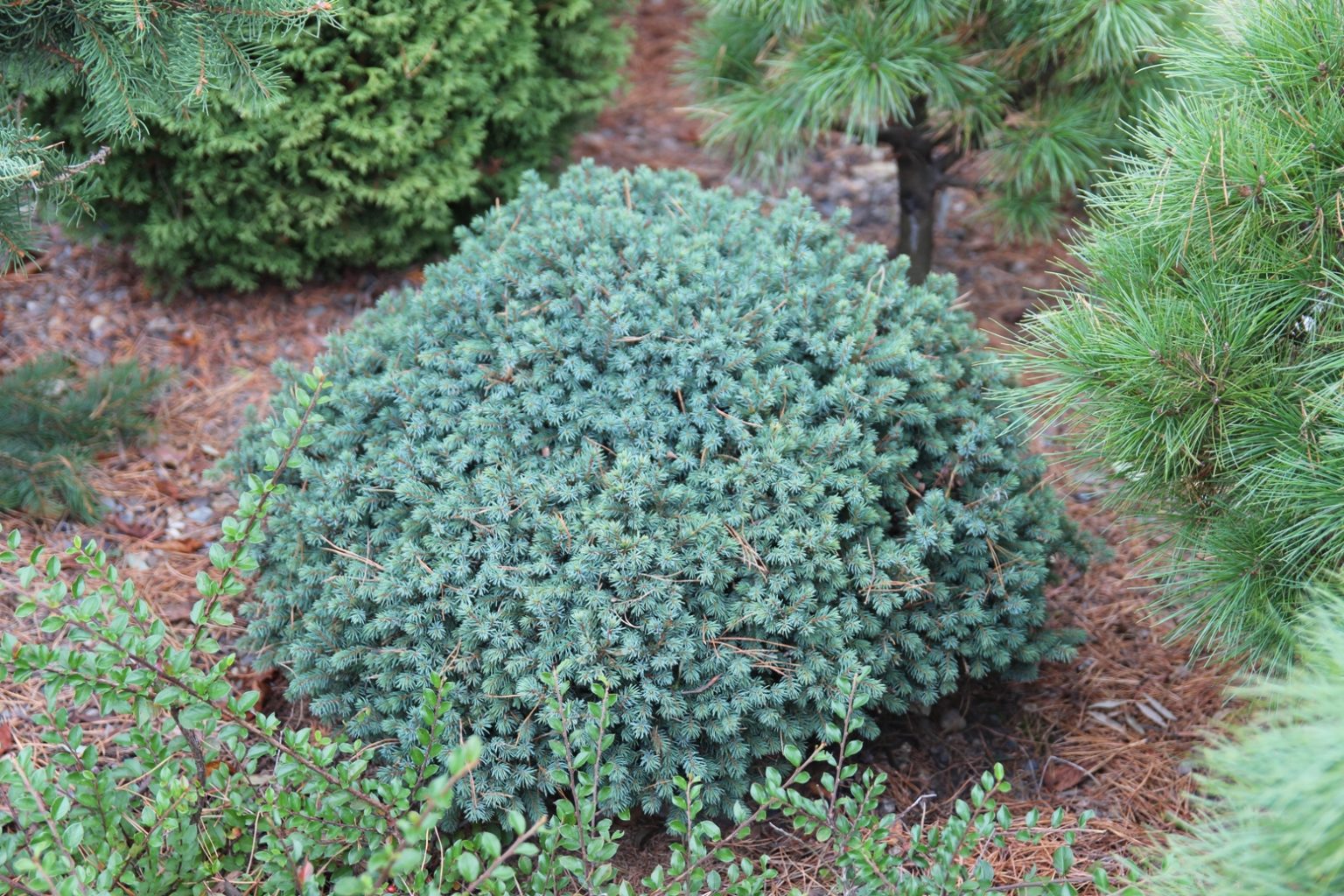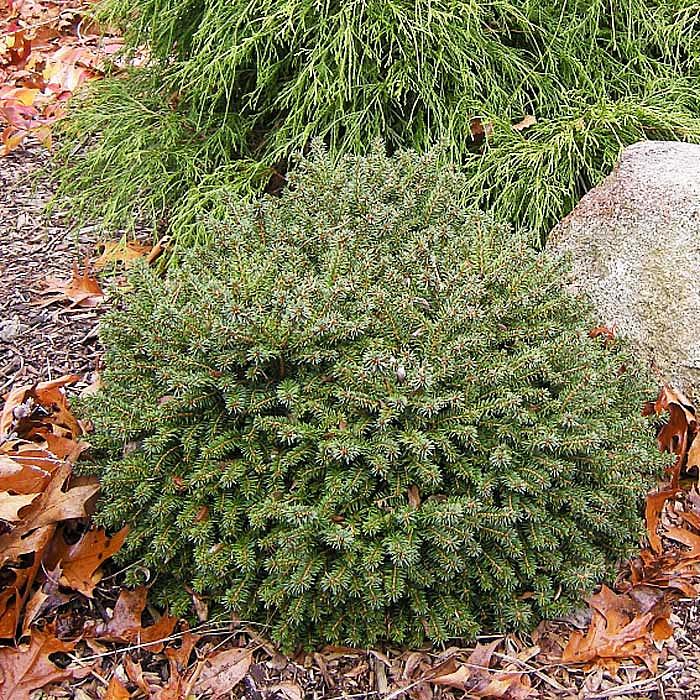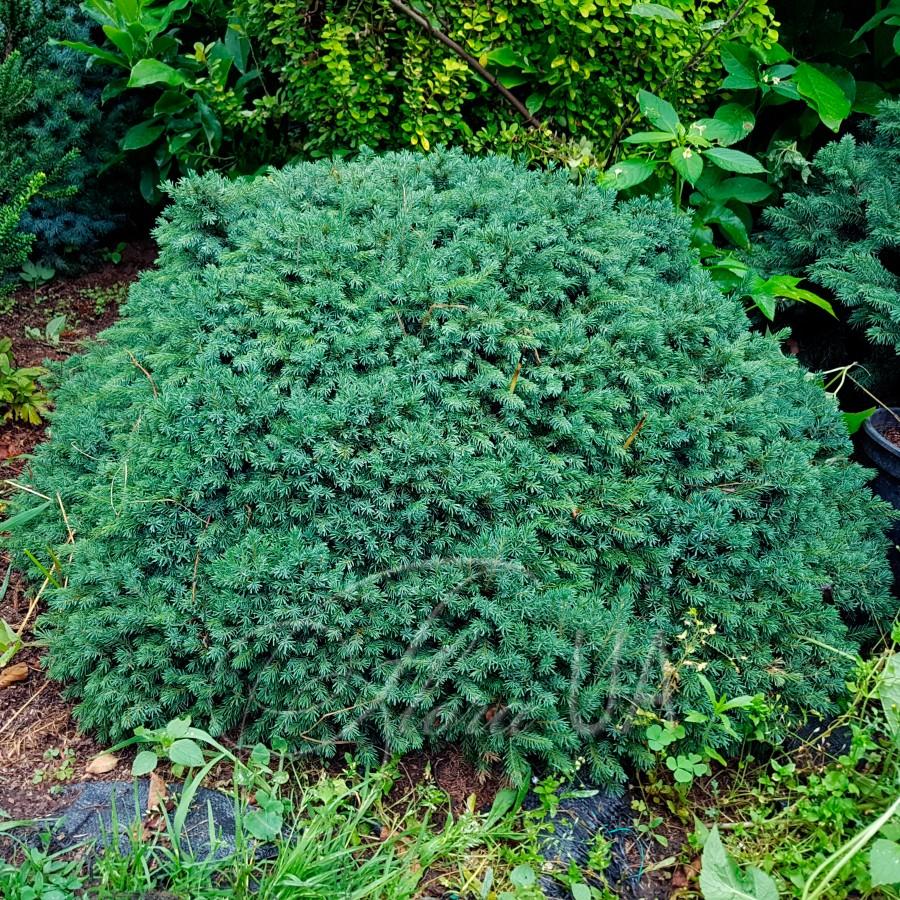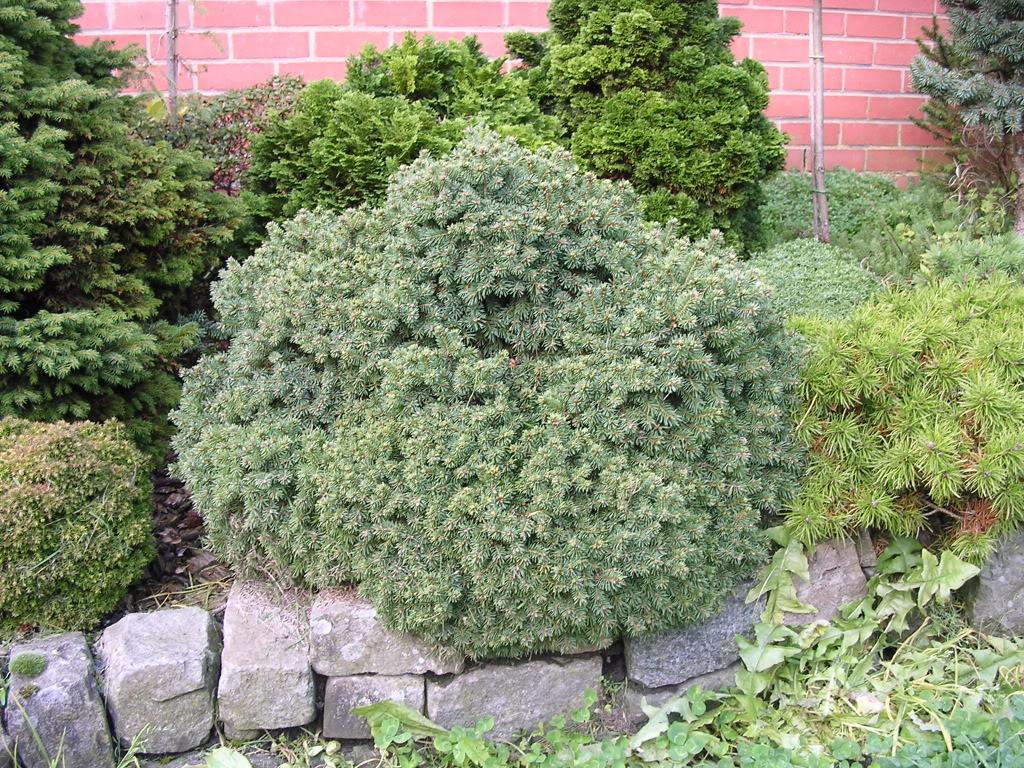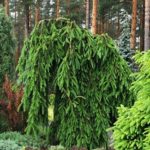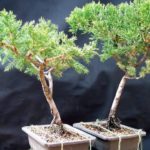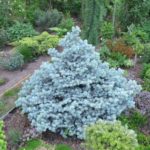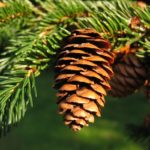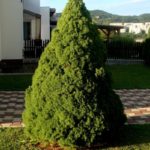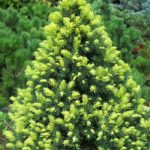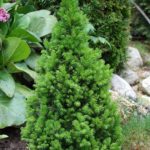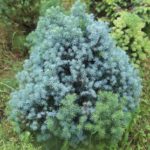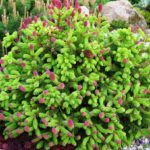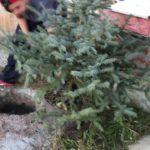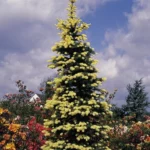Canadian spruce Echiniformis is considered one of the shortest growing conifers. Moreover, this variety appeared quite a long time ago. The exact date of its origin is unknown, but it has been established for certain that the plant existed in France before 1855. This culture has pronounced decorative properties and is often used in landscape design. The indisputable advantage of the culture is its ease of care.
Description of the tree
The Canadian spruce Echiniformis is believed to have originated in the mid-nineteenth century in France. The mother culture is believed to be the "witch's broom". A young plant develops in the shape of a hemisphere, and when grafted onto a low trunk, it has a spherical shape. After some time, the crown of the Canadian spruce spreads in different directions, becoming cushion-shaped. To prevent this from happening, the plant must be pruned on time.
Until the age of 10, Echiniformis increases by 2-4 centimeters every season. As a result, it reaches a height of 40 centimeters and a width of 60. By the age of 30, the size of the tree reaches 60 centimeters. In this case, the crown width is 1 meter. With careful care, spruce of this variety can live in urban environments for 50 years.
Spruce Echinoformis is characterized by thin short shoots that are arranged radially. This means that the crop itself can maintain a spherical shape. Canadian spruce is characterized by a fairly dense crown. The needles are 5-7 millimeters long and are green in color with a grayish or blue tint. The root system is well developed, but it grows not in depth, but in width.
Application in design
Spruce Echiniformis is a very attractive plant that is often used in landscape design. It can be used in group and single plantings. The culture is also used to create rocky gardens and alpine slides.It is used to create an oriental-style landscape and rockeries.
Plants look very beautiful in small areas and in groups with other conifers in the foreground. Also, spruce of this variety can be grown in containers and used to decorate houses, office buildings, and restaurants.
Planting spruce
When choosing a site for planting, it should be taken into account that the spruce Echiniformis, like the ordinary variety, is considered to be very light-loving. However, the culture can withstand slight partial shade. The plant does not make any special demands on the composition of the soil. It grows well in both acidic and alkaline environments. At the same time, spruce takes sandy soil worst of all.
Due to the superficial location of the roots, spruce can also be grown in areas with high groundwater levels. But in this case, it is imperative to organize a drainage layer.
Seedling preparation
Most often, spruce seedlings of this variety are sold in containers. It is important to consider that such plants can be planted from early spring to late autumn. In this case, dug up seedlings need to be moved into open ground from April to May or from mid-August to October.
You should not buy plants with an open root system. Nurseries often offer to dig up blue spruce seedlings. In this case, the earthen lump needs to be moistened and wrapped in burlap. After which it needs to be landed as quickly as possible. Immediately before planting, the earthen ball needs to be watered. This will help simplify the transshipment process.
How to plant correctly
To ensure successful planting of the Canadian spruce Echiniformis, it is recommended to do the following:
- Prepare a hole for planting. The hole should be approximately twice as large as the root system of the seedling.
- If necessary, pour a layer of crushed stone or expanded clay onto the bottom of the recess. After which the hole needs to be half filled with a mixture of fertile and garden soil.
- Carefully remove the seedling from the container, being careful not to damage its root system.
- Place in the center of the depression and cover with soil. It is important to ensure that the root collar is flush with the soil surface. It is not recommended to deepen it.
- Water the plant well and cover the tree trunk with a layer of mulch. You can use peat or bark for this.
- In the first winter, cover the plant with any suitable material. To do this, you can use agrofibre or make a cardboard canopy. In early spring, the crop needs to be shaded from the bright sun.
Care
In order for the Echiniformis spruce to grow and develop normally, it needs to be provided with complete and high-quality care.
Watering rules
Immediately after planting, the plant needs frequent watering. It is important to ensure that the soil does not dry out. It is also not recommended to allow plantings to become waterlogged and constant stagnation of moisture in the root area. After this, watering should be stopped. In summer, it is recommended to moisten the crop every week.
Air humidity parameters are of no small importance for this plant. With automatic watering, they can be turned on every day in the morning. The duration of the procedure should not exceed several minutes. This will be an excellent alternative to systematic irrigation of the crown. If automatic watering is not available, the crown should be sprayed with a hose. In hot weather, the procedure is carried out daily.
Loosening
It is quite difficult to loosen the rooted Echiniformis spruce, since its lower shoots are on the ground. The procedure can only be carried out under a grafted tree.However, this must be done carefully and to a shallow depth. The procedure is carried out only during the first 2 years after planting. Subsequently, instead of loosening, mulching is carried out.
Trimming algorithm
When using spruce to create a hedge, it is permissible to perform radical pruning. Also, from time to time, sanitary pruning should be carried out to remove diseased and dry branches. This procedure should be carried out in late spring or early summer - after the end of active sap flow.
Crown cleaning
The Canadian spruce Echiniformis is distinguished by a fairly dense crown, which has very short internodes, since the annual growth does not exceed a few centimeters. Without light, needles and old shoots dry out quickly. In addition, ticks can grow there.
Before cleaning the crown of a spruce tree, you need to protect your eyes, hands and respiratory organs. Needles provoke skin irritation, and particles of dry bark that come into contact with mucous membranes can cause swelling.
At the end, it is recommended to treat the crown and the soil under it with a fungicide. It is best to use a copper-based product for this. Injured areas should be treated Bordeaux mixture.
Preparing for cold weather
Adult plants are frost-resistant, but young seedlings need protection. They need to be covered to protect them from late frosts. Spruce branches are used as a covering material.
You can also mulch the tree trunk circle with peat or sawdust. This option can be used in the first years after planting. The thickness of the mulch layer is 6-8 centimeters.
Sun protection
Echiniformis spruce suffers less often from early spring burns than other Canadian spruce trees. However, sometimes the tree gets damaged. This happens at the beginning of the season due to the fact that the root cannot supply moisture to the top of the tree, and the sun's rays provoke the evaporation of water from the branches and needles. To avoid problems, on bright afternoons you should cover the spruce with burlap or non-woven fabric.
Reproduction methods
Coniferous plants can be propagated in different ways - by seed, cuttings, grafting. Seeds do not help preserve varietal characteristics, and grafting is usually used only in commercial nurseries to breed new forms. That's why gardeners prefer cuttings.
For rooting, it is worth preparing a small greenhouse with a mixture of sand and peat. Then you need to do the following:
- At the beginning of summer, cut off the cutting with a heel - a fragment of wood. For spruce of this variety, a length of 2-3 centimeters is enough.
- Treat the cut with Kornevin.
- Bury the cuttings into the soil mixture and cover the greenhouse with film or a lid.
- Constantly spray the plant. This will help maintain the same humidity level.
Rooted cuttings can be planted next year. The plant is planted in a permanent plot at the stage when its side shoots appear.
Disease and pest control
Spruce of this variety has strong immunity, but sometimes it suffers from pathologies. The most common problems include the following:
- Fungal pathologies - affect weakened cultures. They can develop under snow during thaws or in the structure of a thickened crown. It is recommended to treat the plant with copper preparations. To do this, you need to carry out systematic spraying in spring and autumn.
- Root rot - develops when moisture stagnates. Signs of pathology include impaired development of spruce in mid-summer and softening of the roots. The diseased plant needs to be dug up and the roots treated. In this case, infected fragments should be removed. After which the spruce needs to be planted in a new area, and the previous place should be treated with a fungicide.
- Rust - affects conifers growing near pome crops. A characteristic sign of the disease are growths up to 5 millimeters in size. They are bright orange in color and appear on shoots in early summer. At the first signs of pathology, the branches need to be removed and burned. In this case, it is recommended to treat the spruce with Bordeaux mixture or other means - “Ditan”, “Tseneb”.
Among the pests that pose the greatest danger to spruce are the following:
- Spruce spider mite - in this case, the needles lighten and lose their shine. Subsequently, yellow spots appear on the needles. For control, acaricides should be used - “Aktellik”, “Sunmite”.
- Spruce false scale - provokes browning of needles and drying of shoots. The larvae leave shiny marks on the plant. Spraying with insecticides will help control the pest. It should be carried out in early spring. If the crop is severely damaged, the procedure is repeated at the end of summer.
Spruce Echiniformis is a beautiful plant that is often used to decorate summer cottages. In order for a culture to grow and develop normally, it needs to be properly cared for.

